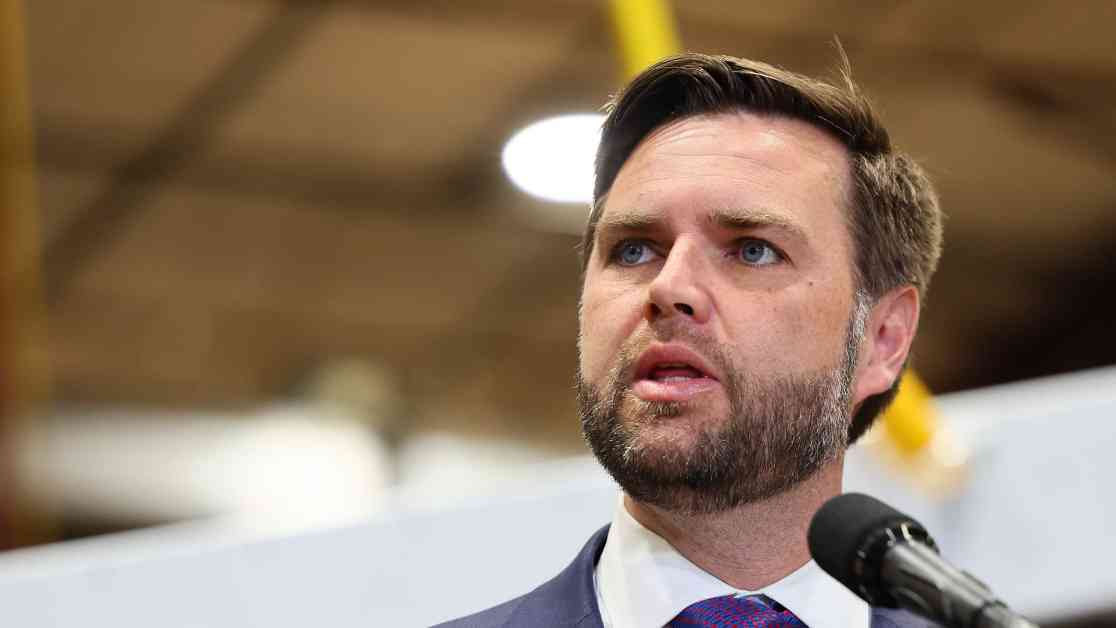Republican vice presidential candidate, Sen. JD Vance, recently made headlines with his proposal to raise the child tax credit to $5,000 per child. This ambitious plan has sparked a debate among policy experts and lawmakers about the feasibility and implications of such a significant increase.
Challenges and Considerations
Sen. JD Vance of Ohio, a former running mate of President Donald Trump, is advocating for a substantial expansion of the child tax credit. His proposal to raise the credit to $5,000 per child has garnered attention and raised questions about the practicality of implementing such a change. While Vance is enthusiastic about the idea, he acknowledges the challenges of working with Congress to make it a reality.
According to Garrett Watson, a senior policy analyst at the Tax Foundation, Vance’s proposal represents a significant increase compared to the current benefit of up to $2,000 per child for 2024. The potential cost of raising the child tax credit to $5,000 per child is estimated to be around $3 trillion over the next 10 years, adding to concerns about the federal budget deficit. This raises important questions about how to navigate the financial implications of such a substantial expansion.
The Impact of the Child Tax Credit
The child tax credit has played a crucial role in supporting families and reducing child poverty in the United States. During the pandemic, lawmakers temporarily increased the maximum child tax credit from $2,000 to either $3,000 or $3,600, depending on the child’s age. This expansion, combined with monthly payments to families in need, helped lower the child poverty rate to a historic low of 5.2% in 2021, according to a Columbia University analysis.
However, without action from Congress, the maximum child tax credit is set to decrease from $2,000 to $1,000 once Trump’s 2017 tax cuts expire after 2025. This impending reduction underscores the importance of ongoing discussions about the future of the child tax credit and the potential impact on families across the country.
Senate Blocks Child Tax Credit Expansion
Vance’s proposal for a $5,000 child tax credit comes on the heels of a recent Senate vote that blocked an expanded version of the credit. The bill, which had passed in the House with bipartisan support, aimed to improve access to the child tax credit and retroactively boost the refundable portion of the tax break. However, Senate Republicans were unable to reach a consensus on the design of the credit, leading to the bill’s failure.
Democrats, in response to Vance’s pro-family platform, pushed for the expanded child tax credit but faced opposition from Senate Republicans. Despite the setback, President Joe Biden and Vice President Kamala Harris have pledged to continue advocating for an expanded child tax credit to support families in need.
Potential Challenges of Vance’s Proposal
While Vance’s $5,000 child tax credit proposal has garnered attention for its potential to support families, there are several challenges and considerations to address. One key issue is the cost of implementing such a significant increase, which could strain the federal budget and raise concerns about the sustainability of the program.
Another consideration is the design of Vance’s proposed child tax credit, including eligibility criteria, work requirements, and income phase-outs. Many Republicans are wary of removing work requirements and extending benefits to non-working families, highlighting the ongoing debate within conservative circles about the purpose and scope of the child tax credit.
Moving Forward
As the debate over the child tax credit continues, lawmakers and policy experts will need to carefully consider the implications of any proposed changes. Vance’s ambitious plan to raise the credit to $5,000 per child has sparked important discussions about the role of government support for families and the impact on child poverty rates.
While the path forward may be challenging, the ongoing dialogue surrounding the child tax credit underscores the importance of addressing the needs of families and children in the United States. As policymakers navigate the complexities of tax policy and social welfare programs, finding a balance between economic considerations and social support will be crucial in shaping the future of family assistance programs.














